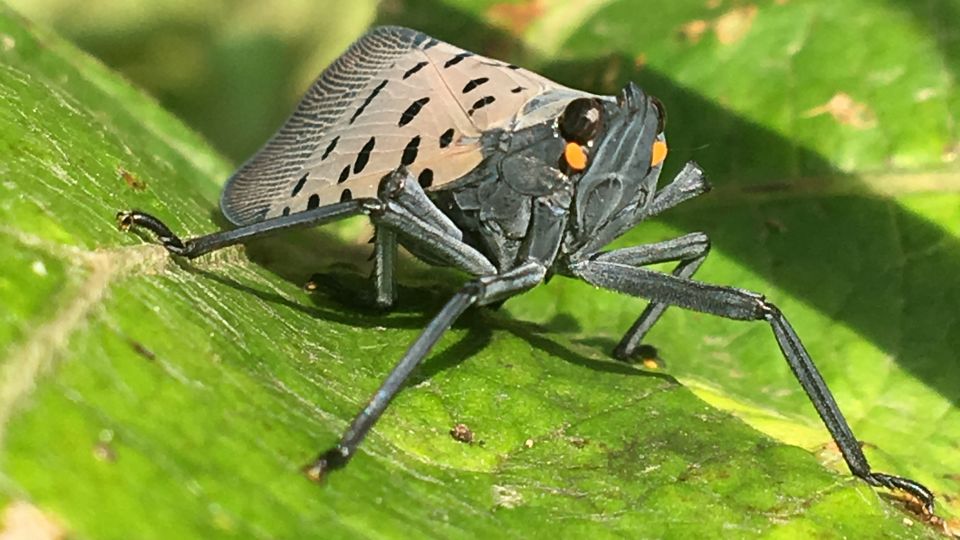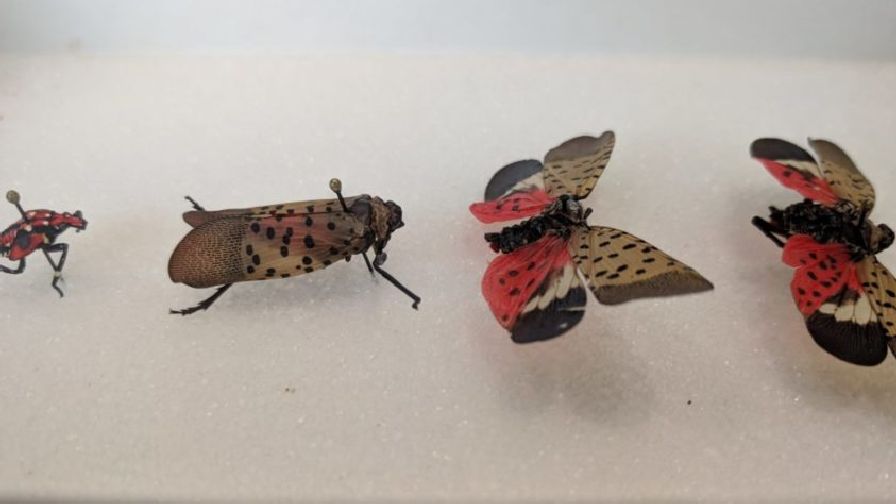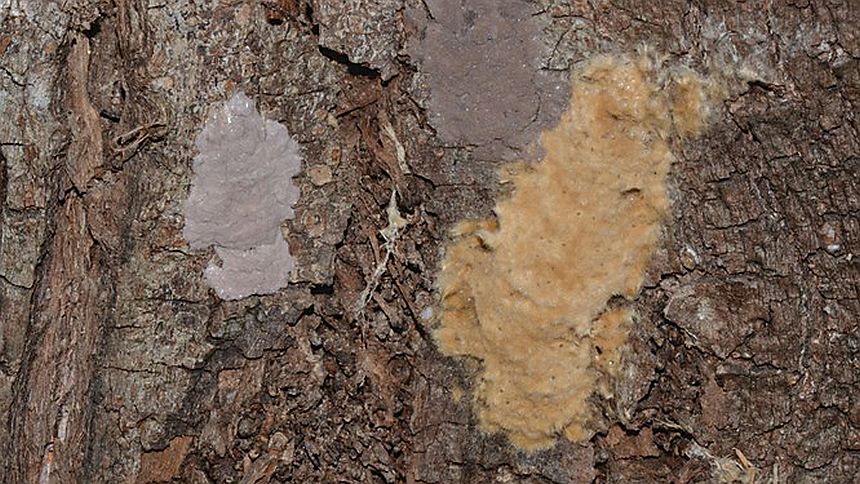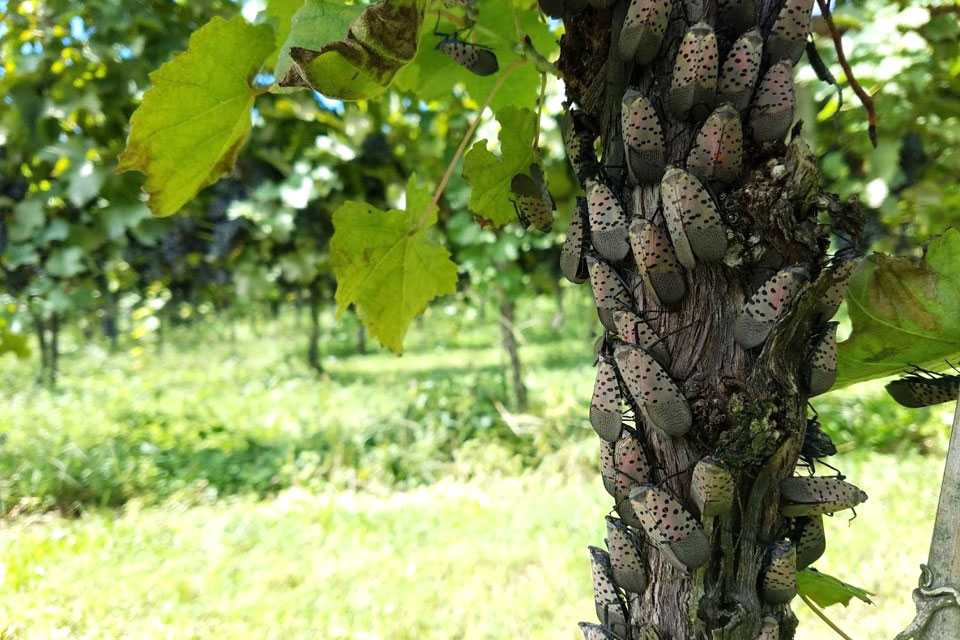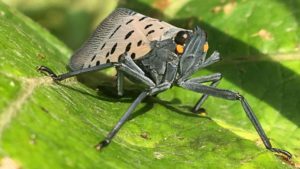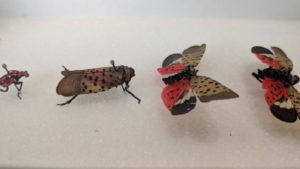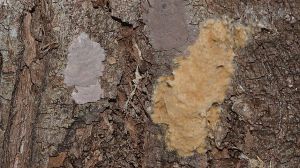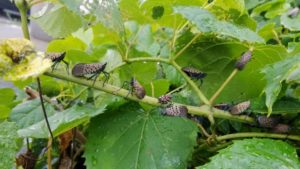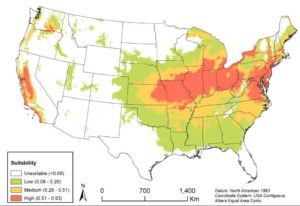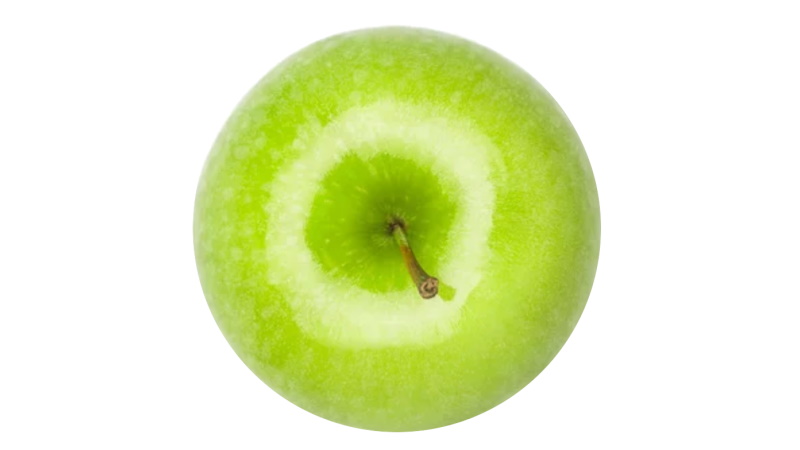Why Western Grape Growers Must Ready Themselves for Spotted Lanternfly
Spotted Lanternfly (SLF) is one formidable foe. The invasive insect, which was first detected in the U.S. in a shipment of decorative rock that arrived in Pennsylvania in 2014, has since spread to 16 other states, from the mid-Atlantic, up into New York and New England, down the East Coast to North Carolina, and across the Midwest as far west as Indiana.
SLF is obviously an eager traveler. Like other invasive pests we have seen from Asia in recent decades, such as spotted-wing drosophila and brown marmorated stink bug, it can spread across its host range in the absence of natural enemies that usually keep pests under check in their native countries, says Surendra Dara, who’s been studying the pest since it first arrived in the country when he worked for University of California Cooperative Extension.
Dara has since moved on to become Director of Oregon State University’s North Willamette Research and Extension Center in Aurora, OR. However, he continues to work on the pest to such a degree that he graciously agreed to deliver a talk at the BioSolutionsSM Conference & Expo in Reno, NV, in February, which is produced by Meister Media Worldwide, parent company of American Fruit Grower.
Dara is concerned because SLF has a lot of things going for it. Being large and colorful, most insect predators leave Lycorma delicatula alone. It overwinters in the egg stage, and the egg masses themselves have protective covering. It also doesn’t have much trouble feeding, as it has a wide host species range, with 92 in California alone, 22 cultivated, 70 wild. Two of those hosts are of particular mention.
Tree of heaven, its favored host, is seemingly ubiquitous in the state. Grapes are SLF’s favorite food and, between raisin, table, and wine, represent a key component of the state’s economy.
“So there are plenty of opportunities for it to survive and multiply if it ever gets to California and surrounding states,” Dara says. “With limited natural control and having several evolutionary adaptations, this pest multiplies, and that is now what is happening with the spotted lanternfly.”
THE HITCHHIKER
The pest is also an excellent traveler, going by car or on warehouse shipments, as Dara says the egg masses can adhere to all sorts of surfaces. Turning brown as they age, they tend to blend in and can be really tough to spot.
When they do arrive, the unwelcome visitors aren’t that difficult to kill. There are a wide range of products available, both biological and chemical, but the pests can come in such numbers it can be daunting. Because of that, researchers have been focusing on classical biological control, the best option for invasive pests for many reasons, Dara says. Unfortunately, though spotted lanternfly (SLF) has natural enemies, parasitoids, in China, so far researchers haven’t found any that they are certain to attack SLF — and only SLF — because upsetting the natural ecological balance could be disastrous. “The beneficial has to be specific, very specific, to the target pest,” he says.
The main thing all growers can do right now is to learn about the pest, especially being able to quickly identify it, Dara says. But the most important action growers can take is to educate the general public about the threat. One thing that can get the public’s attention is that SLF is not just a threat to agriculture. It loves roses and other landscape plants, as well as other trees.
Once growers know what the pest looks like, it’s time for the most important step, Dara says — outreach. His flight to the BioSolutions Conference was canceled, so he delivered his talk via video because he was there to do outreach — albeit within the agricultural community — to ask growers to do such outreach when they returned to their farms. It’s vital to the overall mission, he says.
“The first thing is to do outreach and, as much as possible, prevent an invasion. Outreach events — like what we are doing right now — are important so that when we see the pest we can help prevent its spread.”




